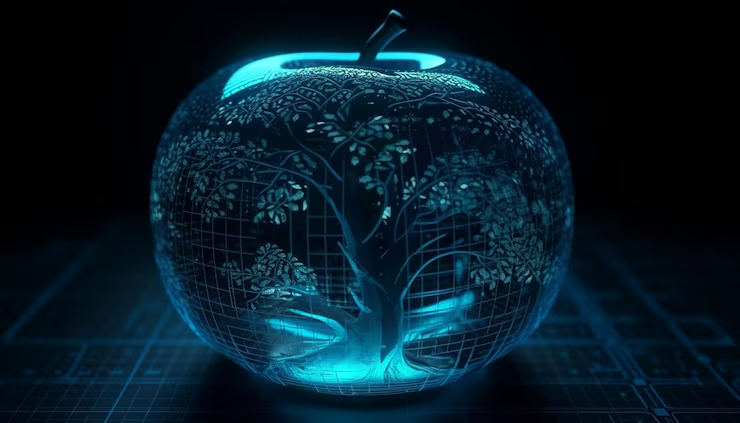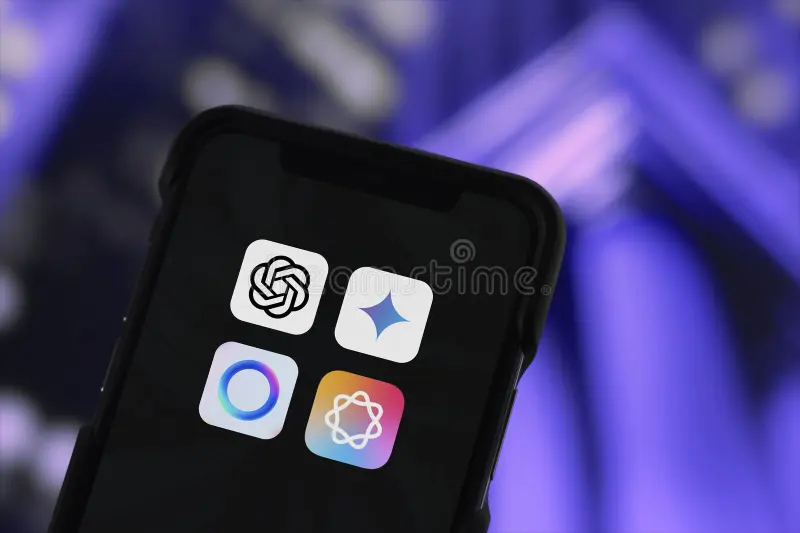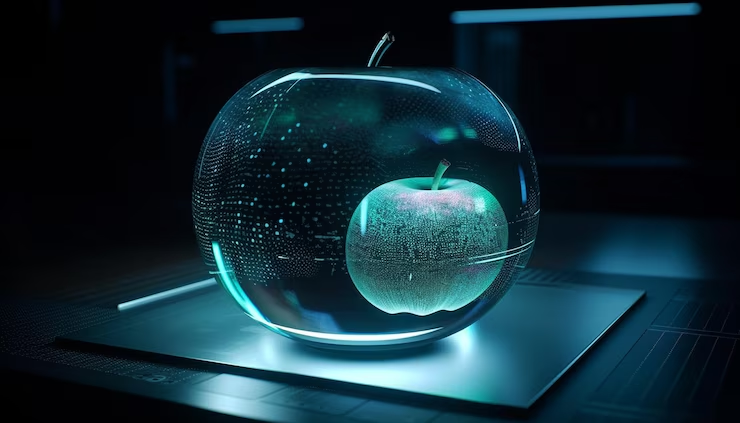Introduction to Apple AI Update 2025
Apple’s latest AI update, 2025, is shaking things up in Silicon Valley and beyond. It’s more than just a software upgrade; it’s a major shift. With new AI-powered iPhones, cloud features, and business connections, Apple is raising the bar for tech companies and startups alike.
As a result, six global tech trends are emerging quickly. These trends are transforming industries from healthcare to finance, changing how consumers use devices, and challenging Apple’s toughest competitors. This blog will look at these trends sparked by Apple AI update 2025. It includes updated insights, expert opinions, and forecasts for 2025 and beyond.
Apple’s innovations are already shaping corporate strategies, inspiring new tech startups, and prompting analysts to revise their long-term predictions. The effects are clear in user adoption rates, enterprise deployments, and developing AI standards worldwide.
Additionally, Apple AI update 2025 is likely to encourage new investments in the AI startup scene. Smaller companies are eager to make the most of Apple’s new frameworks and APIs. Incubators and venture capitalists have announced funds aimed at developers working within Apple’s AI space.
Governments are noticing these changes, too. Countries with strong tech sectors, such as Canada, the UAE, and Germany, are drafting regulations and incentives to attract AI companies that prioritize privacy, following Apple’s lead. The AI race is becoming more than just competition between companies; it’s also a tool for innovation, data control, and global influence.
Apple’s AI update is also creating a long-term change in how operating systems are built. By integrating AI into the core of iOS and macOS, Apple is changing software development to make it more flexible and aware of user context.
Industry experts believe that Apple’s AI models are designed to be modular. This design allows for easy scaling across devices, from the Apple Watch to the Mac Pro. This flexibility provides developers with a consistent framework to deploy smart solutions at scale.
In the future, we may see Apple opening its AI frameworks to external developers outside its ecosystem, similar to how Apple Pay and CarPlay expanded into third-party markets. This would signal Apple’s desire to be more than just a consumer brand; it aims to be a key player in next-generation global AI infrastructure.
These wide-ranging effects show that Apple AI update 2025 is not simply about product innovation. It represents a shift in how economies grow, how governments regulate, and how users interact with the digital landscape.
Link: Learn more about Apple’s official AI features

Market Impact and Stock Trends Post Apple AI Update 2025
Since announcing the Apple AI update 2025, global stock markets have responded noticeably, especially in tech indices. Investors are optimistic about AI-driven companies that match Apple’s model of seamless integration and consumer-focused privacy policies.
Tech ETF inflows have surged in North America and East Asia, with mutual funds quickly investing in companies connected to Apple’s AI ecosystem. Suppliers of neural engines, microprocessors, and on-device machine learning technology have seen increased demand.
Hedge funds are also shifting their portfolios to focus on companies developing AI tools for iOS and macOS. The market’s excitement indicates a broader acknowledgment that Apple’s innovation impacts the entire tech sector.
Consumer demand for AI-native devices is shortening upgrade cycles for smartphones, wearables, and accessories. AppleCare subscriptions, Apple One bundles, and AI-enhanced apps are all growing, which boosts Apple’s long-term value.
Analysts predict a 12 to 15% compound annual growth rate in Apple’s AI-driven revenue, bringing the brand closer to becoming the world’s first $5 trillion company. Apple’s early lead in AI could give it a decade-long advantage over its competitors.
The impact extends to the larger economy as countries adopt more AI-driven infrastructure. Sectors like financial services, logistics, and agriculture are starting to see efficiency gains, indirectly influenced by Apple’s leadership in AI. New startups are being created at unprecedented speeds, while established companies are exploring partnerships with Apple ecosystem developers.
Regulators around the world are beginning to discuss the characteristics of a fair and secure AI environment. Inspired by Apple’s focus on privacy, governments in the EU and Asia are proposing guidelines that promote transparency in data usage, encrypted communications, and on-device processing requirements.
Global investment banks are also rebalancing their tech portfolios to emphasize AI infrastructure. Reports from major financial institutions like Bloomberg, Goldman Sachs, and Morgan Stanley identify Apple AI update 2025 as a key moment that has accelerated AI growth in consumer tech by at least three years.
Retail investors are responding as well. Apps like Robinhood and Groww have seen an increase in searches and transactions related to Apple, AI ETFs, and hardware providers aligned with Apple’s AI strategy. This reflects not just confidence in the stock but faith in a broader technological revolution that Apple is leading.
Link: Read Bloomberg’s analysis on Apple’s AI impact
Link: Explore our related post: Nifty vs Sensex 2025 – Where Should You Invest?

1. AI-Native Devices Go Mainstream After Apple AI Update 2025
The launch of Apple’s A18 Bionic chip, with its Neural Core 4.0, enables real-time, on-device processing of machine learning tasks. Tasks that used to require cloud involvement—like voice recognition, image processing, and behavior analysis—are now immediate, private, and efficient.
This has created a surge in demand for AI-native devices worldwide. In Asia, improvements in local language processing have made iPhones more appealing. In Europe, Apple’s commitment to privacy is attracting users tired of data leaks from competitors.
Retailers report a 25% increase in interest for iPhones and MacBooks after the update. Educational institutions and government agencies are also placing large orders for AI-native devices that meet data sovereignty requirements.
This progress extends to accessories like AirPods and the Apple Watch, which now offer AI features for voice navigation, health alerts, and environmental sensing.
Link: Explore Apple’s A18 Bionic Chip Details
2. Global Surge in Multilingual AI Assistants
With Apple AI update 2025, Siri now supports over 35 languages with improved natural language understanding. It can recognize regional dialects, adjust tone based on user interactions, and switch contexts between cultures.
This multilingual growth is boosting adoption in Latin America, Southeast Asia, and parts of Africa, where language diversity has often been a barrier. Now, even small businesses can use Siri for scheduling, translation, and voice-driven documentation without needing extra software.
The tourism and hospitality sectors are also taking advantage of Siri’s multilingual capabilities. Hotels in Dubai, Bangkok, and Barcelona are now offering iPads with custom AI concierge services powered by Siri.
Language education apps are making use of Siri’s functions for interactive learning. Real-time feedback on pronunciation and tone recognition are being incorporated into classrooms around the world.
Link: See how Siri’s AI is evolving
3. Personal AI Becomes a Reality
Apple AI update 2025 presents ‘Personal Intelligence,’ a neural model that learns from your interactions, apps, health data, and workflows. It creates a tailored, proactive experience for each user.
From smart alarms that adapt to traffic patterns to calendar alerts for health checkups based on individual medical histories, this AI goes beyond predictions—it’s genuinely personal.
This has transformed user-device interactions. Students receive custom study plans, freelancers get automated reminders for invoices, and families share grocery lists made from usage patterns.
The AI also incorporates emotional awareness. It detects mood via typing patterns and facial expressions (for Vision Pro users), providing mindfulness suggestions and adapting notifications accordingly.
Link: Visit Apple’s Health and Personalization Hub

4. Healthcare Tech Transformed
Apple HealthKit and ResearchKit now connect with hospitals, allowing patient data to be analyzed securely and responsively. Real-time anomaly detection alerts users about irregular heartbeats, breathing issues, and stress levels.
Wearables supported by Apple AI update 2025 can inform paramedics of seizures or falls. Clinics in Japan, the UK, and the US are testing AI-based diagnostics using Apple tools.
This development enhances rural health initiatives. NGOs and health authorities in India and Africa are using Apple devices for remote diagnoses.
Fitness apps, elderly care systems, and telemedicine services are experiencing higher engagement and trust thanks to AI-assisted tracking and compliance reporting.
5. Enterprise AI and Workflows Supercharged
Apple Business Essentials has added AI-driven workflow automation. It combines calendars, mail, files, and reminders into a cohesive experience. AI handles prioritization, flags critical tasks, and suggests optimal working hours.
Law firms automate document summaries, marketing teams receive insights on campaign performance, and HR departments use smart calendars to schedule interviews.
Companies like Siemens, Infosys, and Adobe are incorporating Apple AI update 2025 into their IT infrastructures.
Startups are utilizing Apple AI tools to create lightweight customer relationship management systems, proposal generators, and inventory management solutions—all tailored for iOS.
6. Privacy-Centric AI Redefines Standards
Unlike competitors that depend on cloud-heavy AI, Apple AI update 2025 focuses on on-device processing and Private Cloud Compute. This ensures your data remains on your device unless you permit it to leave.
Governments and businesses are aligning with this vision. Apple’s privacy-first AI is setting a benchmark in places like the EU, where compliance with GDPR and new AI regulations is essential.
New developer guidelines mandate adherence to ethical AI standards, with Apple providing verification tools to help apps remain transparent.
This builds consumer trust during a time when concerns about data privacy are at an all-time high.
Conclusion: Apple AI Update 2025 is Just the Beginning
Apple AI update 2025 isn’t just an upgrade; it’s the starting point for a smarter digital future. From everyday tasks to life-saving healthcare, Apple is weaving intelligence into everything.
As regulations, businesses, and consumers connect with this future, Apple leads AI innovation, not just as a player but as the standard. Expect more waves of change as Apple continues to shape the AI-driven decade.
